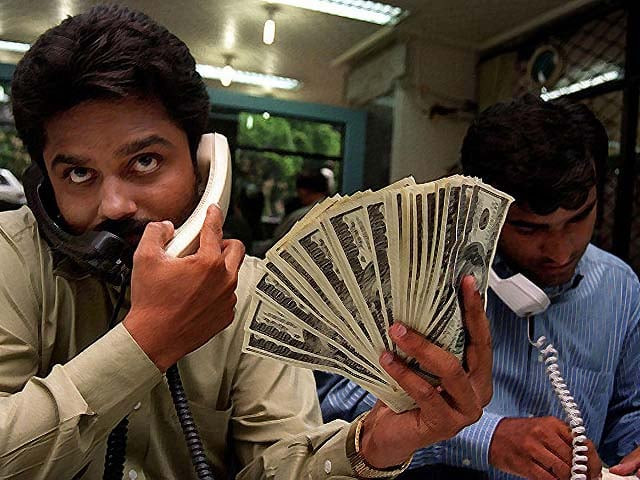A competitive exchange rate is central to the economic performance of Pakistan. International price competitiveness will not only buttress the trade sector (exports and imports) but will also ameliorate the long-run labour productivity, and address poverty and inequality. This steers us to the debate about what makes an exchange rate competitive.
In the past, Pakistan pursued a managed exchange rate regime to demonstrate ‘a strong rupee’. This concept, however, resulted in an over-valued currency, and the incumbents had to dissipate the foreign exchange reserves to defend the rupee. An over-valued rupee did not only thwart the international competitiveness of our exports but also lead to a currency crisis.
Since all the costs are borne in the local currency, over-valuation inflated the production cost of local producers, making our exports incompatible in the foreign market against those of the rival countries. Consequently, the profit margins shrunk (a disincentive to the exporters), and the exports plummeted, forcing the government to service the trade deficit with foreign exchange reserves. In the long run, the economic team could not sustain ‘a strong rupee’ due to an abysmal level of foreign exchange remaining in the country.
In the long run, perpetual over-valuation of a currency also prompts capital flight when the investors anticipate devaluation soon. This limits the reserves available for imports, hence decelerating the overall economic activity. It is why experts often link over-valuation to dismal levels of gross domestic product (GDP) per capita growth, declining investment, and appalling productivity.
Despite being inherently paradoxical, managed float remained the go-to regime due to the populist nature of Pakistani politics. The arguments put forth against restoring the rupee to its equilibrium value include a surge in the national debt burden, highly inelastic imports (petroleum), and lower elasticity of exports together with a lack of historical evidence on the success of devaluation in improving the trading account.
The proponents of a managed exchange rate emphasise on the lessened debt burden and import bill of Pakistan. They claim that the trading sector's woeful performance is mainly due to the structural issues like unfriendly export policies, the energy crisis, and the deplorable tax structure. Though, the over-emphasis on the immediate effect of devaluation results in the ignorance of a market-based regime's long-term impact on the exports, investment, and foreign reserves as the above-mentioned grounds do not outweigh the adverse repercussions of a managed float on the country.
In contrast to the concept of ‘a strong rupee’, Real Effective Exchange Rate (REER) is an appropriate measure of the relative exchange rate competitiveness because it stresses the real value of a currency. Despite a variation in the nominal exchange rate of two currencies, the REER can be identical (=1) if the price of a similar good differs oppositely in the same ratio. In case the REER is out of the whack (≠1), there is a pressure on the nominal exchange rate to adjust because the currency is either over or undervalued relative to the other currency.
This brings us to Pakistan's ongoing Extended Funds Facility (EFF) programme with the International Monetary Fund (IMF). This IMF programme's underlying features include the determination of the exchange rate based on the REER model of the State Bank of Pakistan (SBP). It means that Pakistan is pursuing a ‘market-based exchange rate’ regime, but it has not been completely left to the market. SBP has intervened in the market in cases of volatility.
The foremost reason for keeping a close eye on the exchange is that an entirely free floating exchange rate may culminate in unnecessary speculative capital movement. It can lead to a preference for liquidity, resulting in the rupee's hoarding, a plunge in investment, and a rise in the discount rate. The crux of the matter is that this hybrid regime will shore up confidence in the exporters and foreign investors, aiding to recuperate the slump in foreign currency reserves.



COMMENTS
Comments are moderated and generally will be posted if they are on-topic and not abusive.
For more information, please see our Comments FAQ